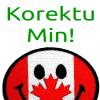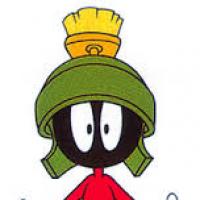Viestejä: 8
Kieli: English
Alkanadi (Näytä profiilli) 12. lokakuuta 2015 14.23.42
« Ho, ĉesu! » mokante la homoj admonas,
What does « » mean?
Miland (Näytä profiilli) 12. lokakuuta 2015 15.02.18
Alkanadi:What does « » mean?" "
or ' '
Mind you, it could be
-
with nothing following except a change of paragraph. Look at Nadine Gordimer's novels and you will see what I mean.
johmue (Näytä profiilli) 12. lokakuuta 2015 16.31.26
Alkanadi:I was reading some of Zamenhoj's poetry and it has some funny simbols.It's the French way of quoting. In Esperanto I usually quote like “Tio estas citaĵo.” or in internet communication like "Tio estas citaĵo."
« Ho, ĉesu! » mokante la homoj admonas,
What does « » mean?
jdawdy (Näytä profiilli) 12. lokakuuta 2015 16.32.00
Russian uses them instead of "Ho, ĉesu". Since Russian was one of Zsmenhoff's native languages, it would have been very normal for him to use them.
Tempodivalse (Näytä profiilli) 12. lokakuuta 2015 17.29.28
jdawdy:Not sure of the actual term, but they are Russian quotation marks.In Russian it is also common to separate quotes in dialogues with long dashes, as so:
Russian uses them instead of "Ho, ĉesu". Since Russian was one of Zsmenhoff's native languages, it would have been very normal for him to use them.
-- That's odd, -- he told me. (More info)
You see this, for example, in the ~1910 translation of Knjaz' serebrjanyj (Princo Serebrjanij) by Shidlovskaja. In Esperanto this seems to have fallen into disuse.
The << >> marks are known as "French".
Nowadays most Esperanto texts, in my experience, just use the English: " "
Alkanadi (Näytä profiilli) 13. lokakuuta 2015 7.18.08
johmue:It's the French way of quoting.Interesting. I didn't know that. I thought the whole world used our form of quotation marks.
The symbol at either end—double « and » or single ‹ and ›—is a guillemet. They are used in a number of languages to indicate speech.
https://en.wikipedia.org/wiki/Guillemet
Ondo (Näytä profiilli) 13. lokakuuta 2015 21.03.46
Alkanadi:You have just scratched the surface. There is an interesting table in the Esperanto Wikipedia article ”citilo”. The form of the quotation marks is only one of the variables: some languages use spaces to separate the marks from the quotation.johmue:It's the French way of quoting.Interesting. I didn't know that. I thought the whole world used our form of quotation marks.
By the way, ”La vojo” was first published in the magazine Lingvo Internacia, June-July 1896. The original typography was something like this:
“Ho, ĉesu !“ mokante la homoj admonas, —
“Ne ĉesu, ne ĉesu !“ en kor’ al ni sonas:
“Obstine antaŭen ! La nepoj vin benos,
Se vi pacience eltenos.“
The spaces before the exclamation marks were quite narrow.
Tempodivalse (Näytä profiilli) 13. lokakuuta 2015 21.22.38
,,quote''
I see this in EO too sometimes.




